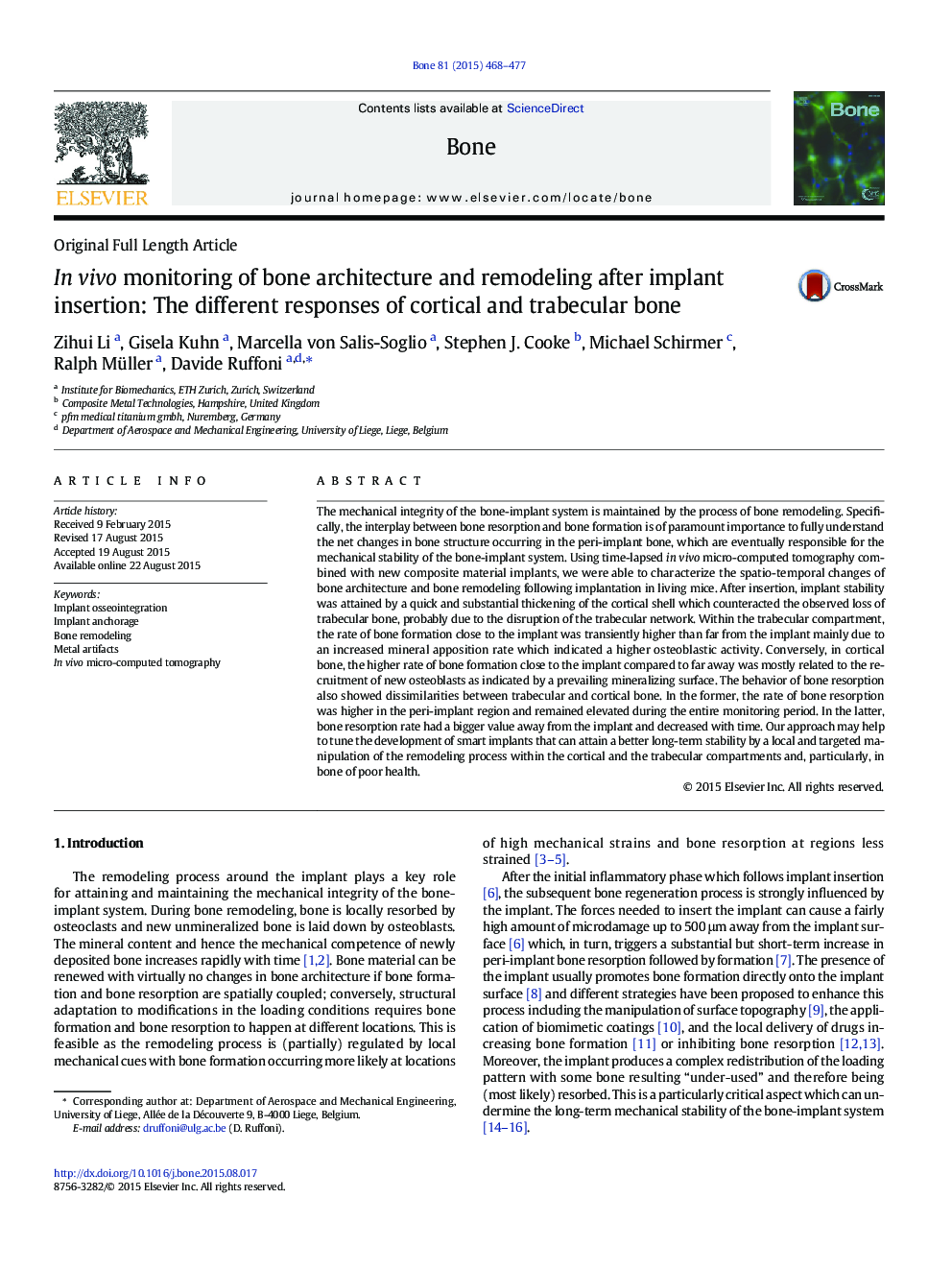| Article ID | Journal | Published Year | Pages | File Type |
|---|---|---|---|---|
| 5889322 | Bone | 2015 | 10 Pages |
â¢We characterize the spatio-temporal changes of bone architecture and bone remodeling after implantation in living miceâ¢Our method combines in vivo micro-computed tomography with new biocompatible implants eliminating metal artifactsâ¢Implant stability was attained by a thickening of the cortical shell which counteracts the loss of trabecular boneâ¢Bone formation and resorption followed different paths linked to recruitment and activity of osteoblasts and osteoclastsâ¢Peri-implant bone resorption was highly dissimilar between cortical and trabecular bone whereas bone formation was not
The mechanical integrity of the bone-implant system is maintained by the process of bone remodeling. Specifically, the interplay between bone resorption and bone formation is of paramount importance to fully understand the net changes in bone structure occurring in the peri-implant bone, which are eventually responsible for the mechanical stability of the bone-implant system. Using time-lapsed in vivo micro-computed tomography combined with new composite material implants, we were able to characterize the spatio-temporal changes of bone architecture and bone remodeling following implantation in living mice. After insertion, implant stability was attained by a quick and substantial thickening of the cortical shell which counteracted the observed loss of trabecular bone, probably due to the disruption of the trabecular network. Within the trabecular compartment, the rate of bone formation close to the implant was transiently higher than far from the implant mainly due to an increased mineral apposition rate which indicated a higher osteoblastic activity. Conversely, in cortical bone, the higher rate of bone formation close to the implant compared to far away was mostly related to the recruitment of new osteoblasts as indicated by a prevailing mineralizing surface. The behavior of bone resorption also showed dissimilarities between trabecular and cortical bone. In the former, the rate of bone resorption was higher in the peri-implant region and remained elevated during the entire monitoring period. In the latter, bone resorption rate had a bigger value away from the implant and decreased with time. Our approach may help to tune the development of smart implants that can attain a better long-term stability by a local and targeted manipulation of the remodeling process within the cortical and the trabecular compartments and, particularly, in bone of poor health.
Graphical abstractDownload high-res image (219KB)Download full-size image
